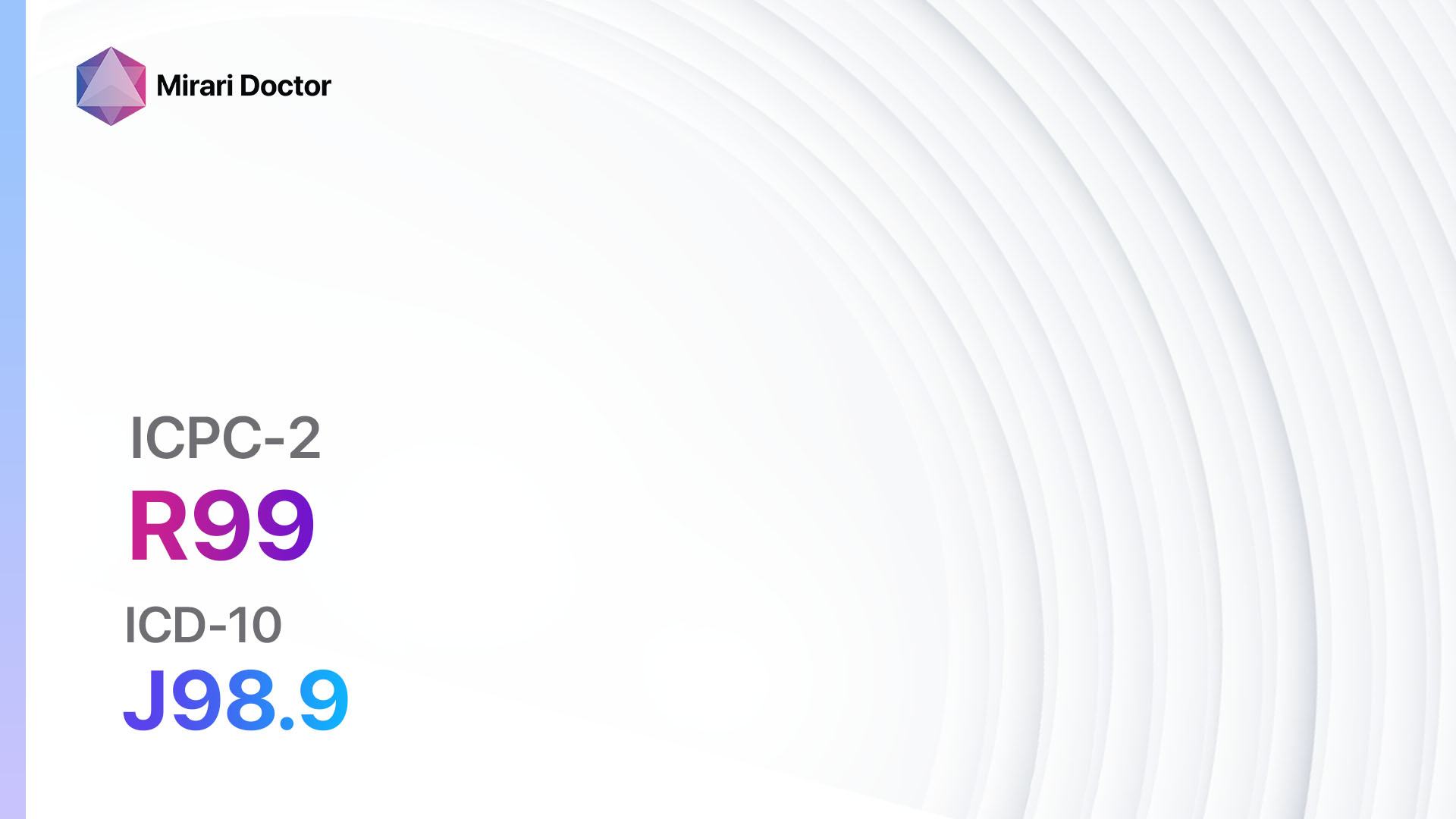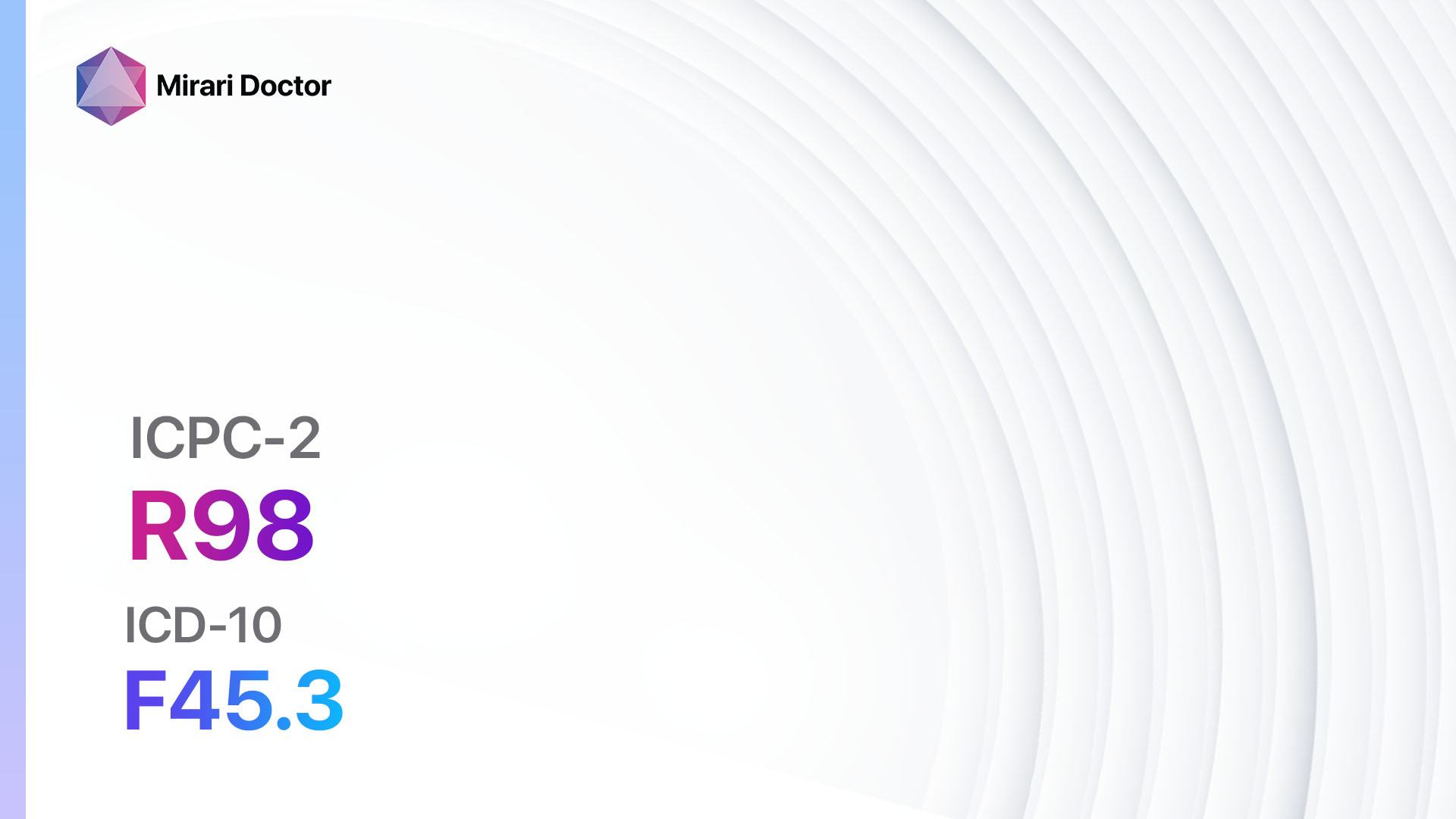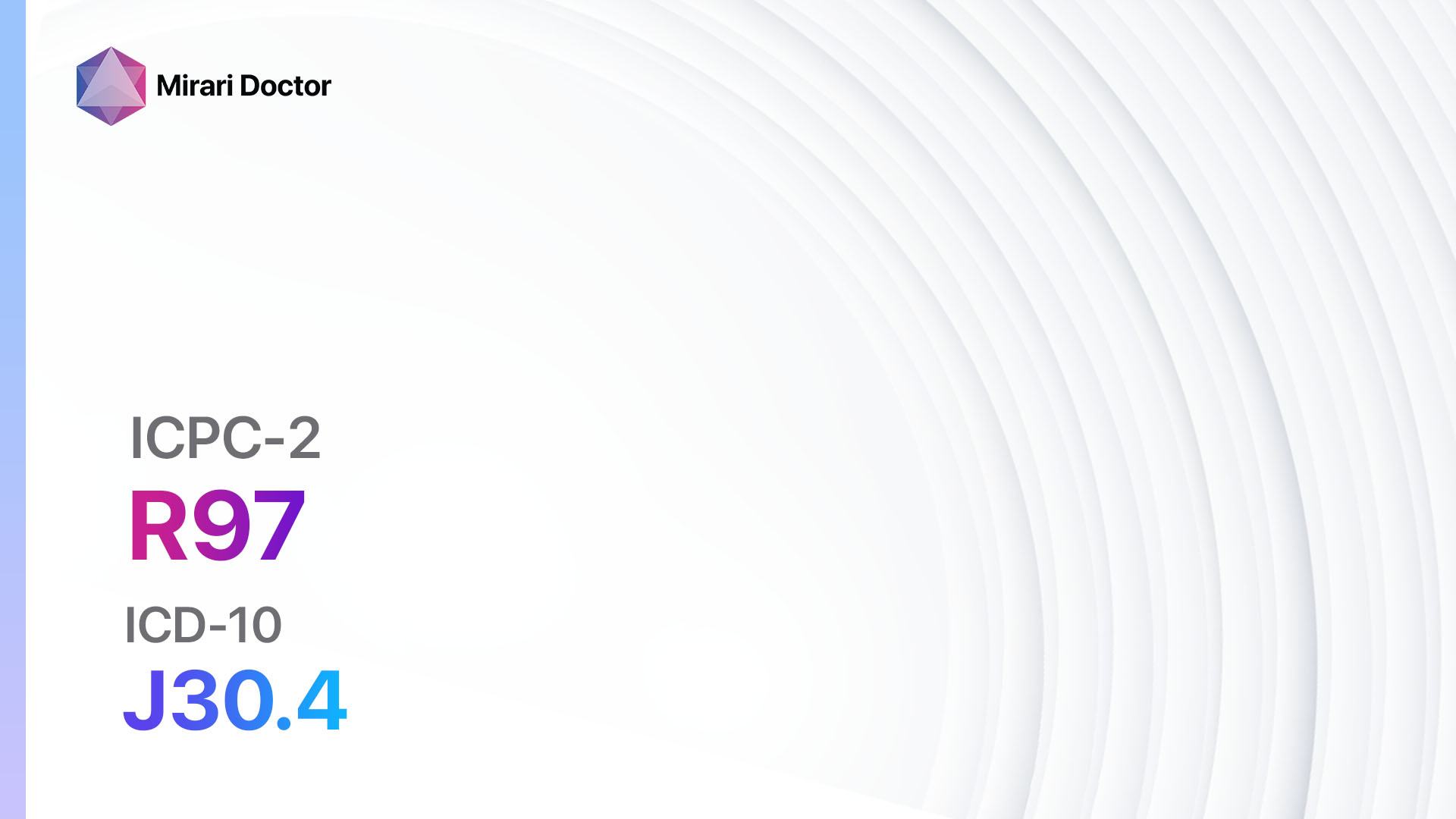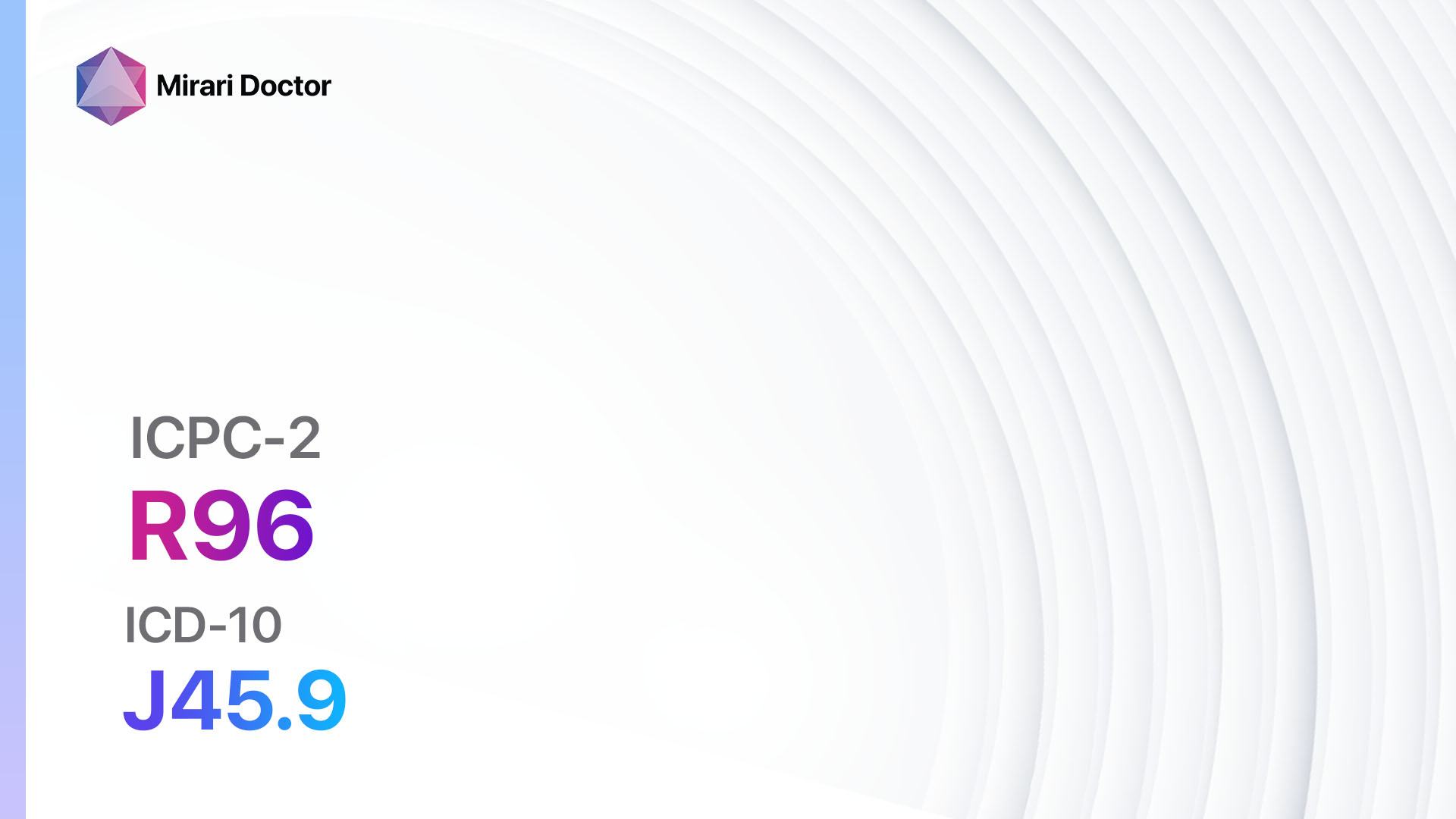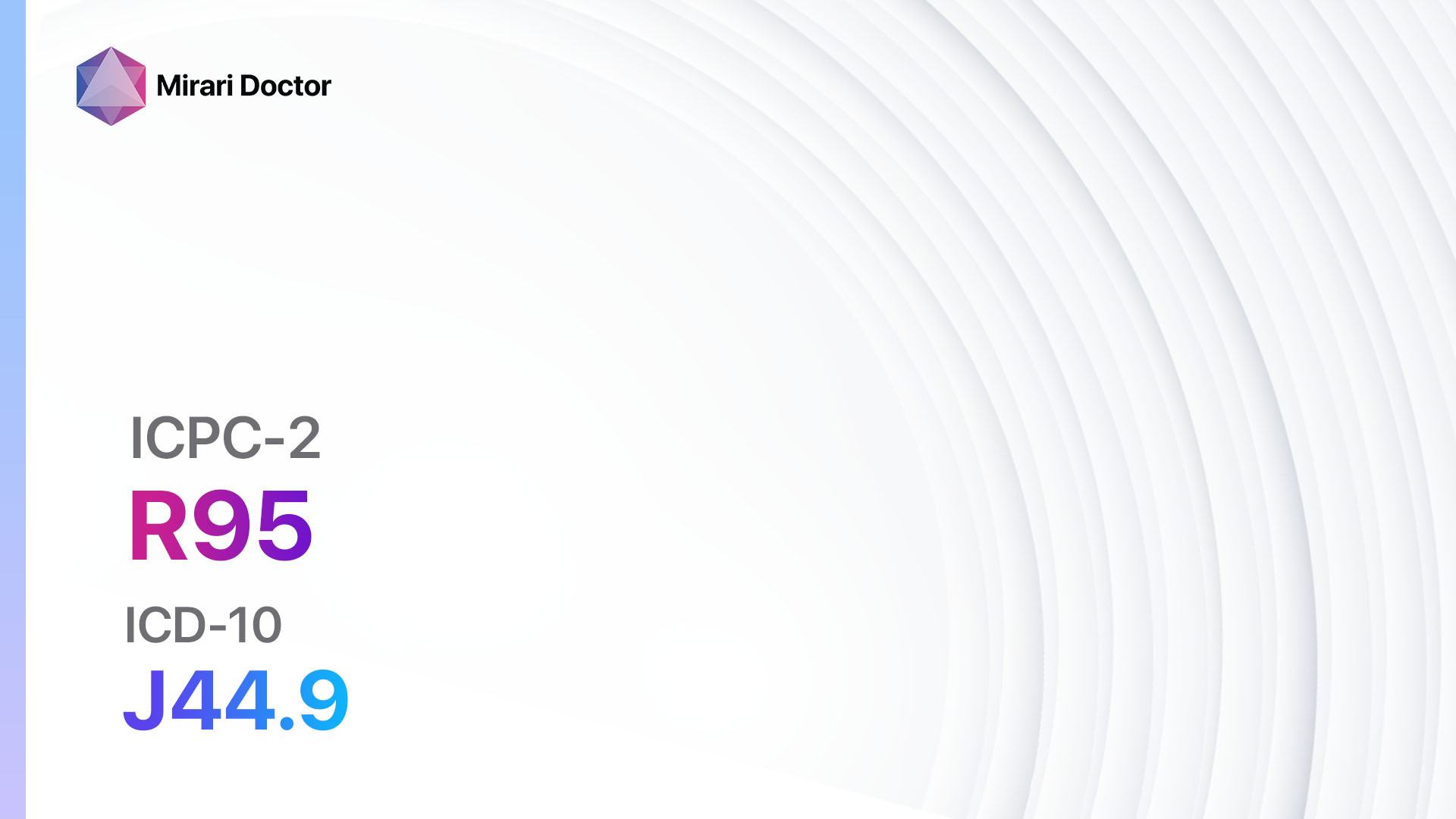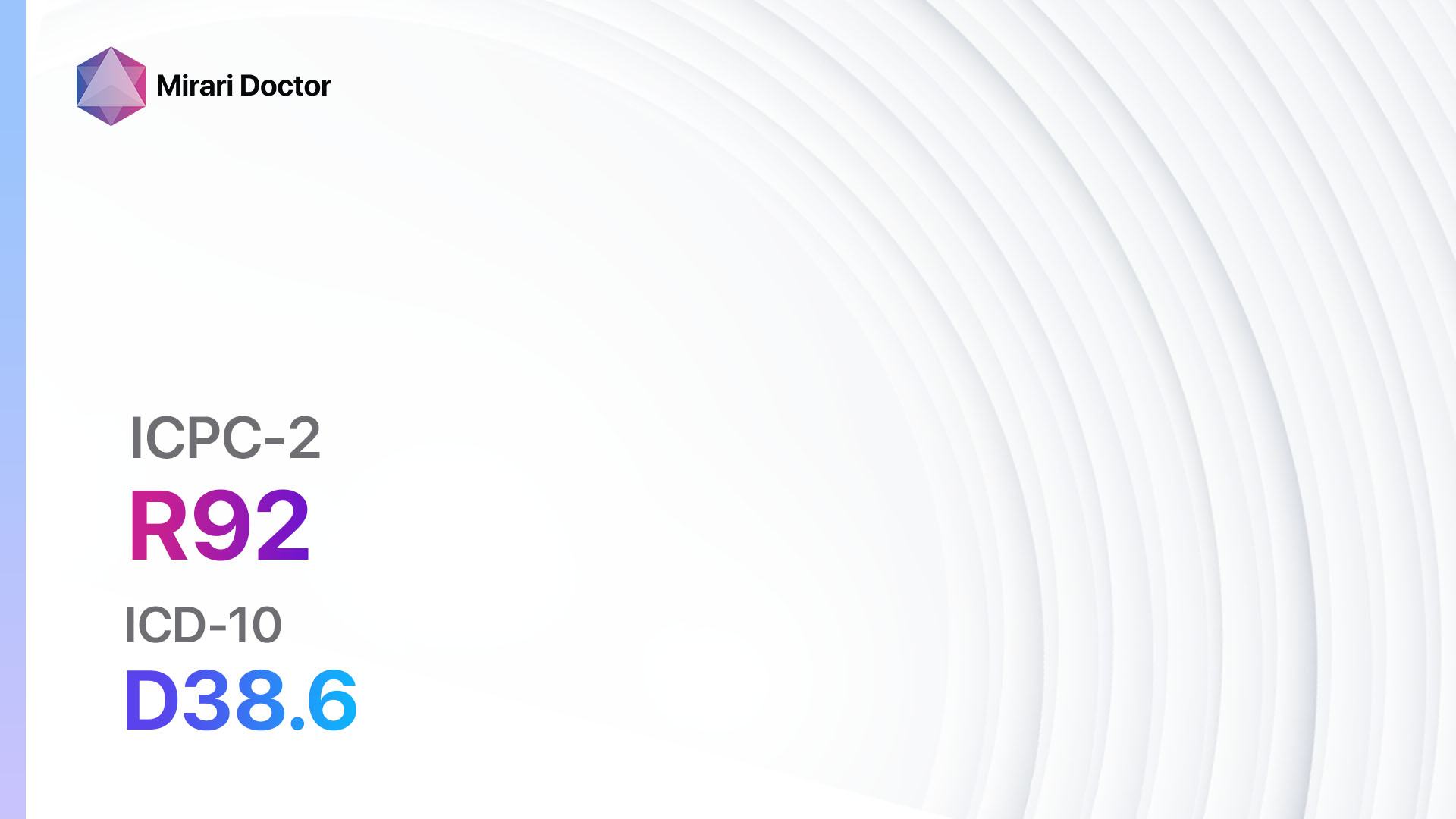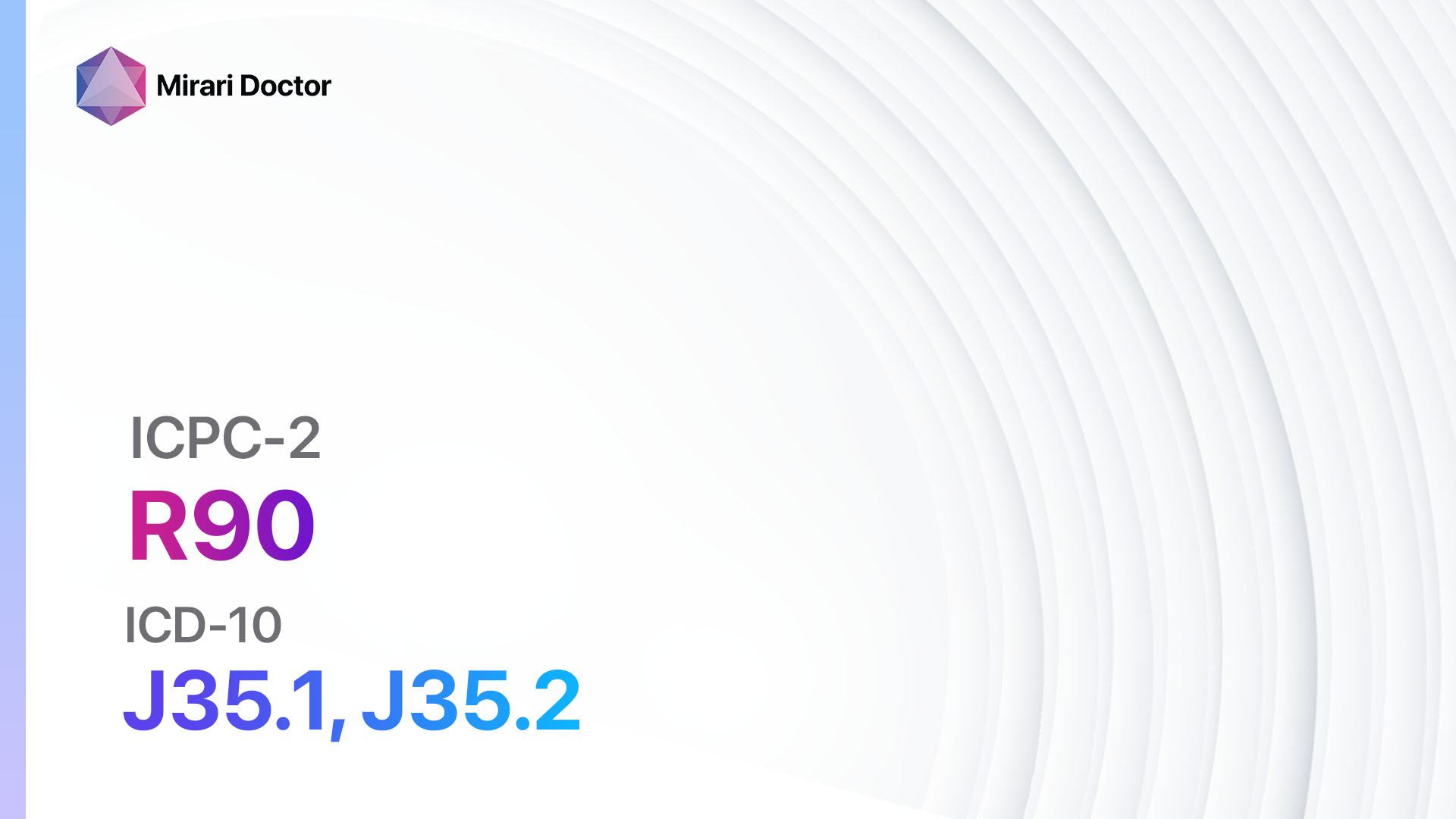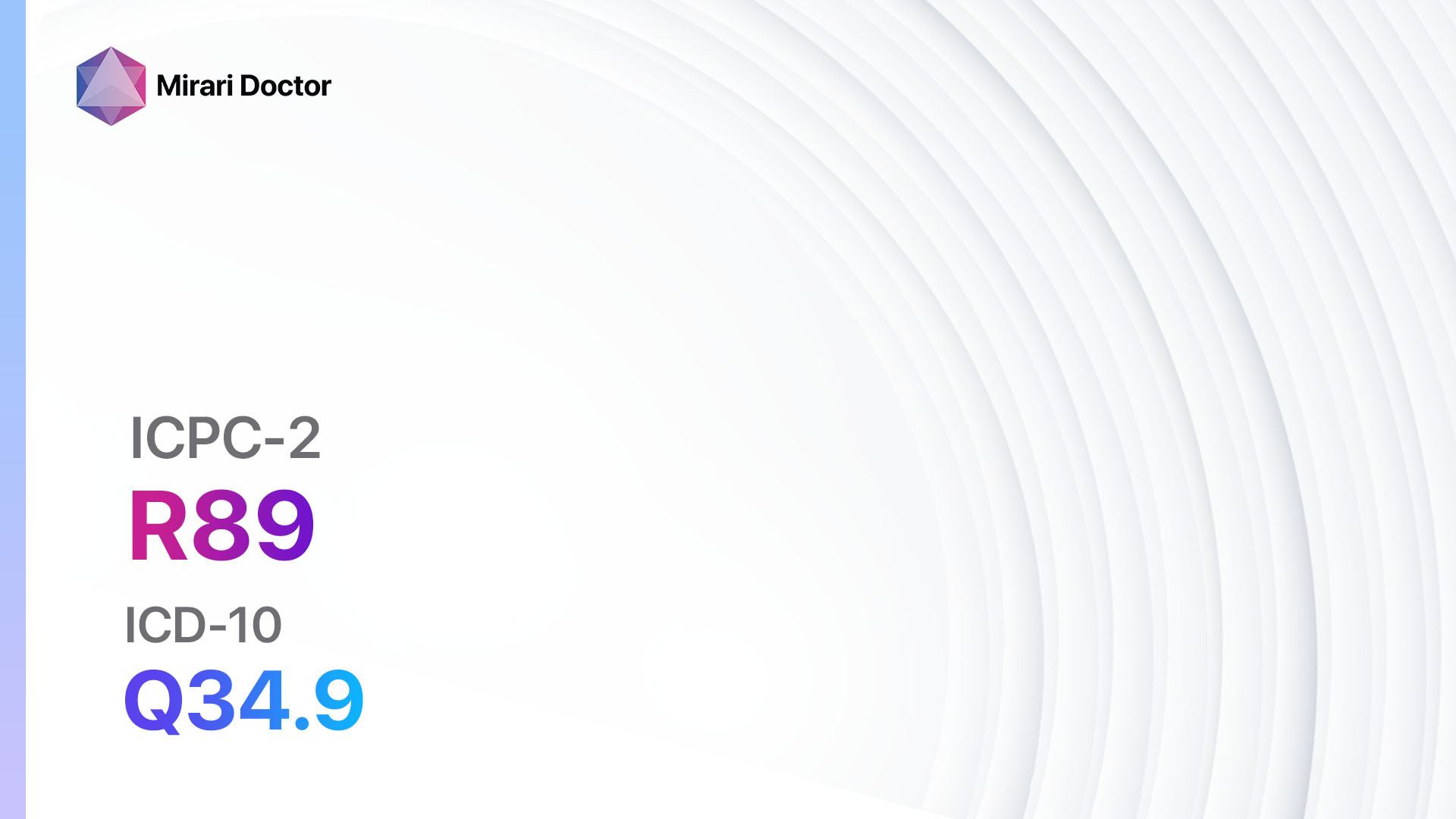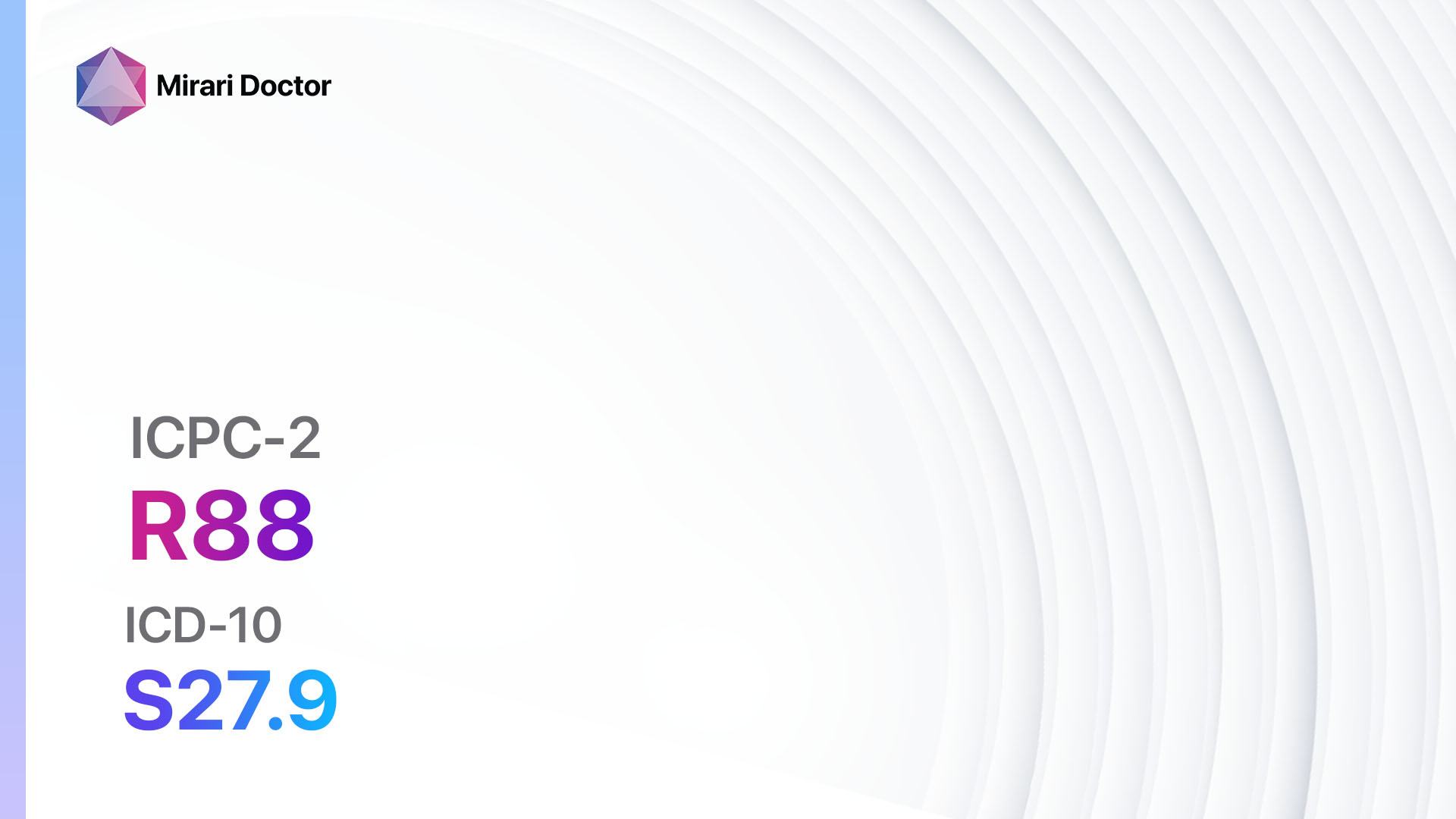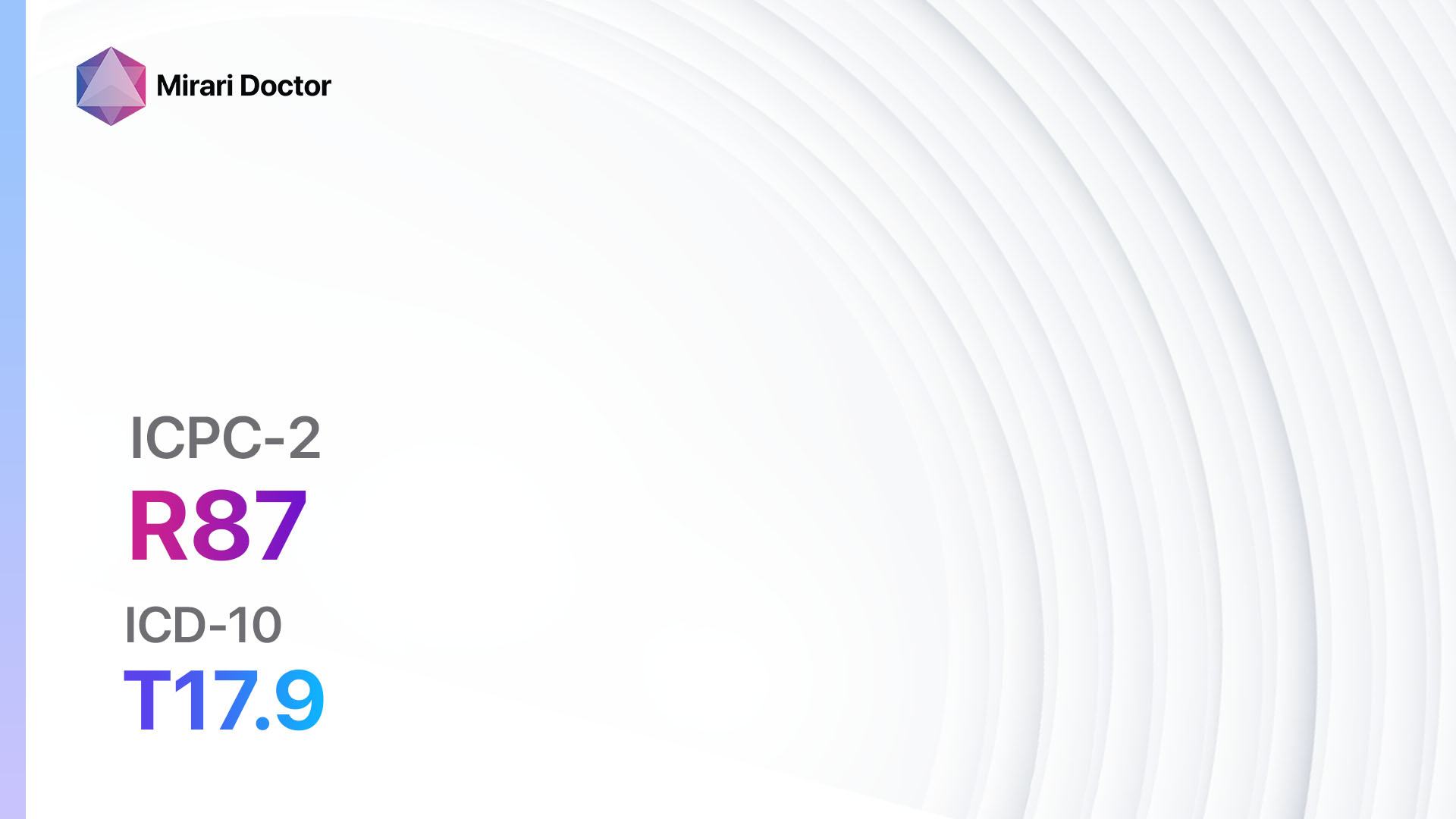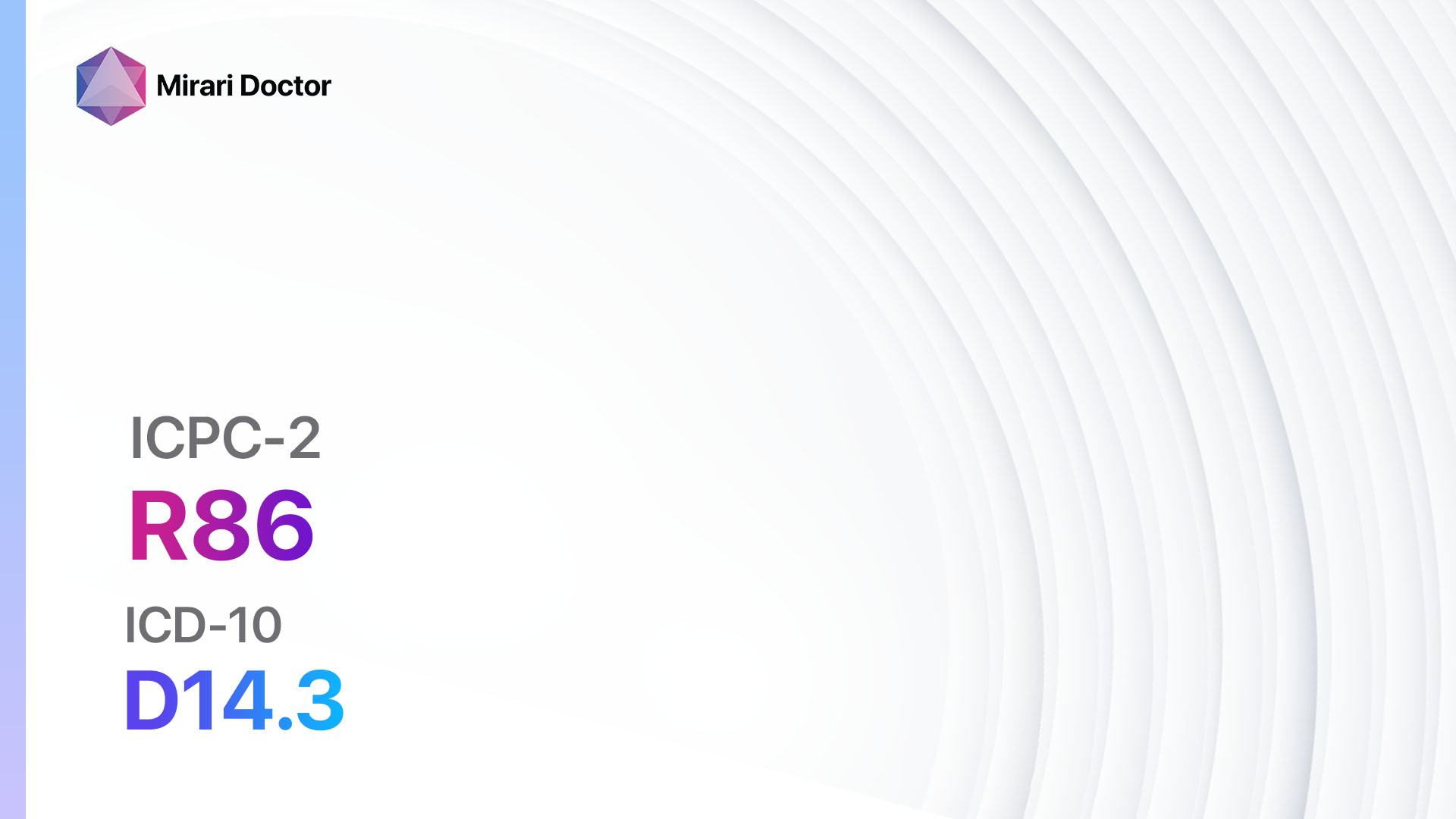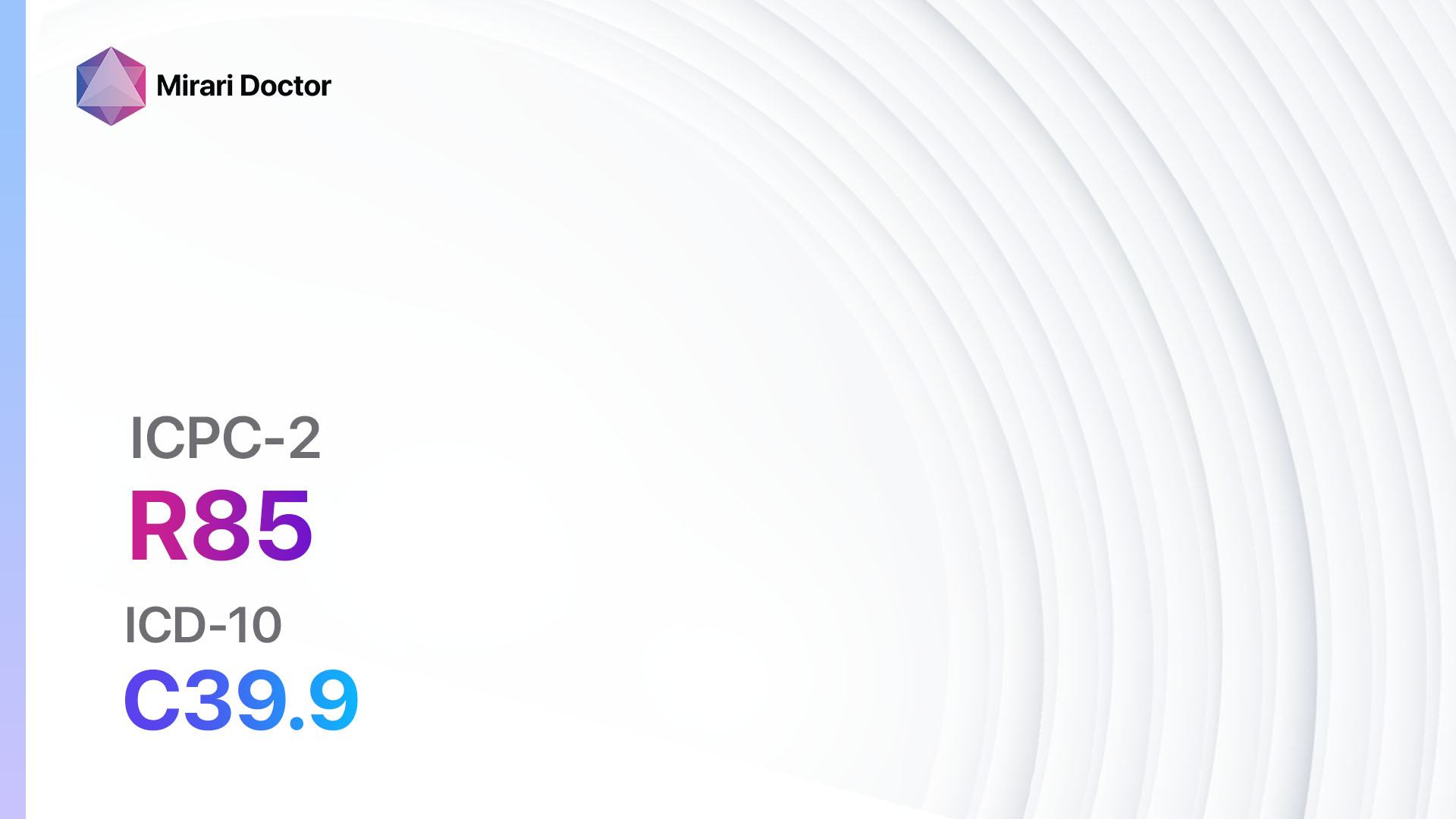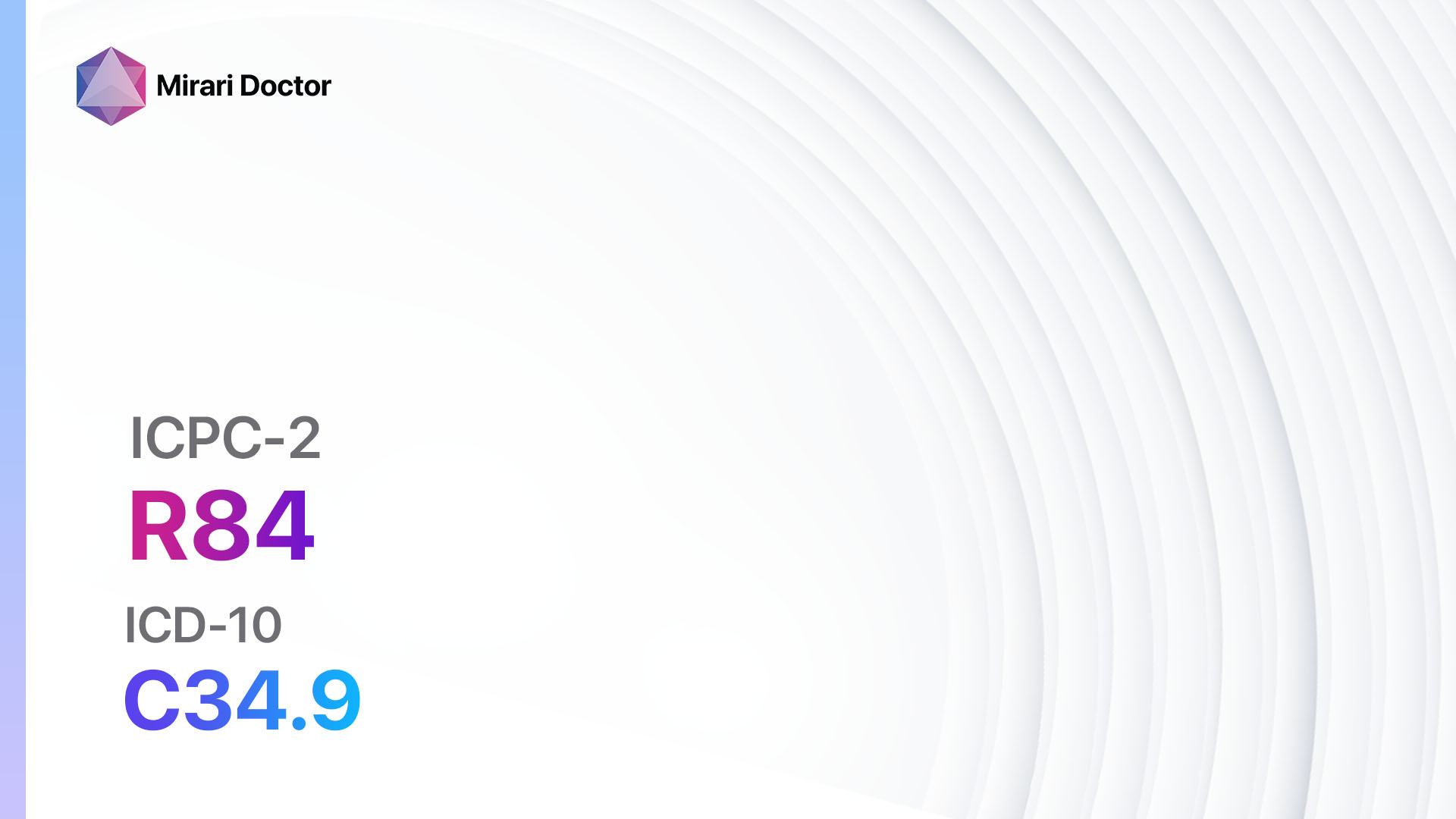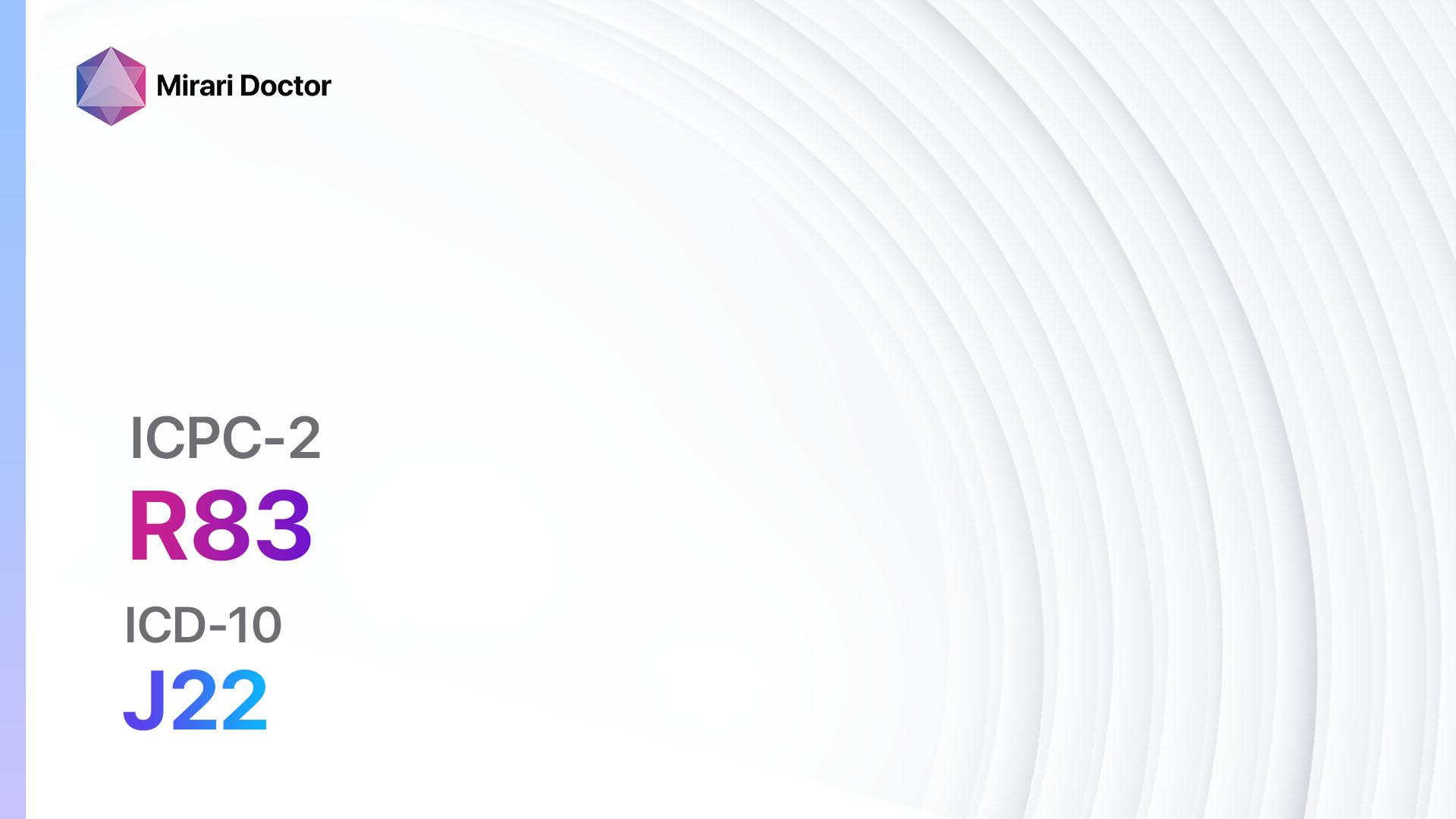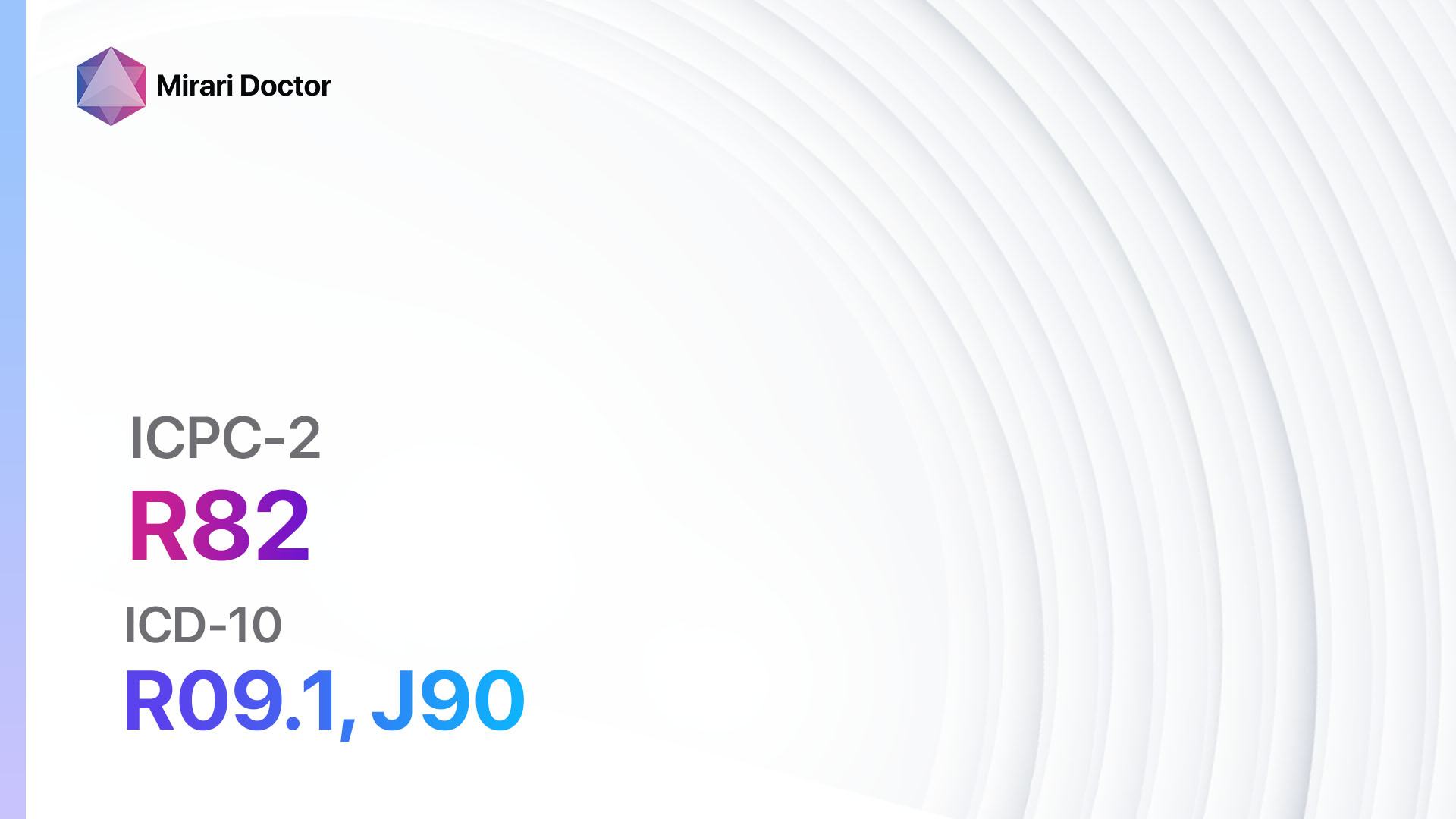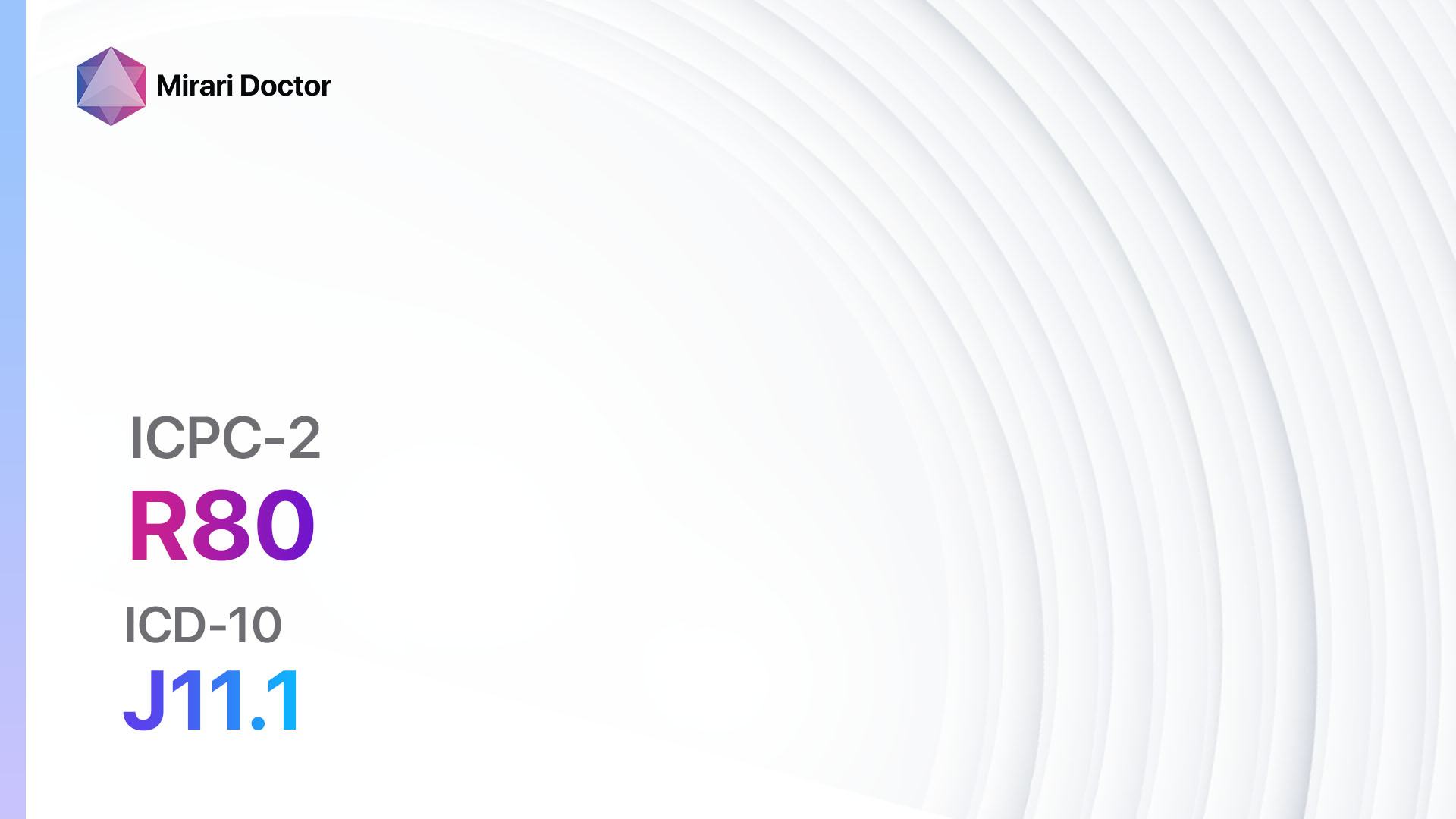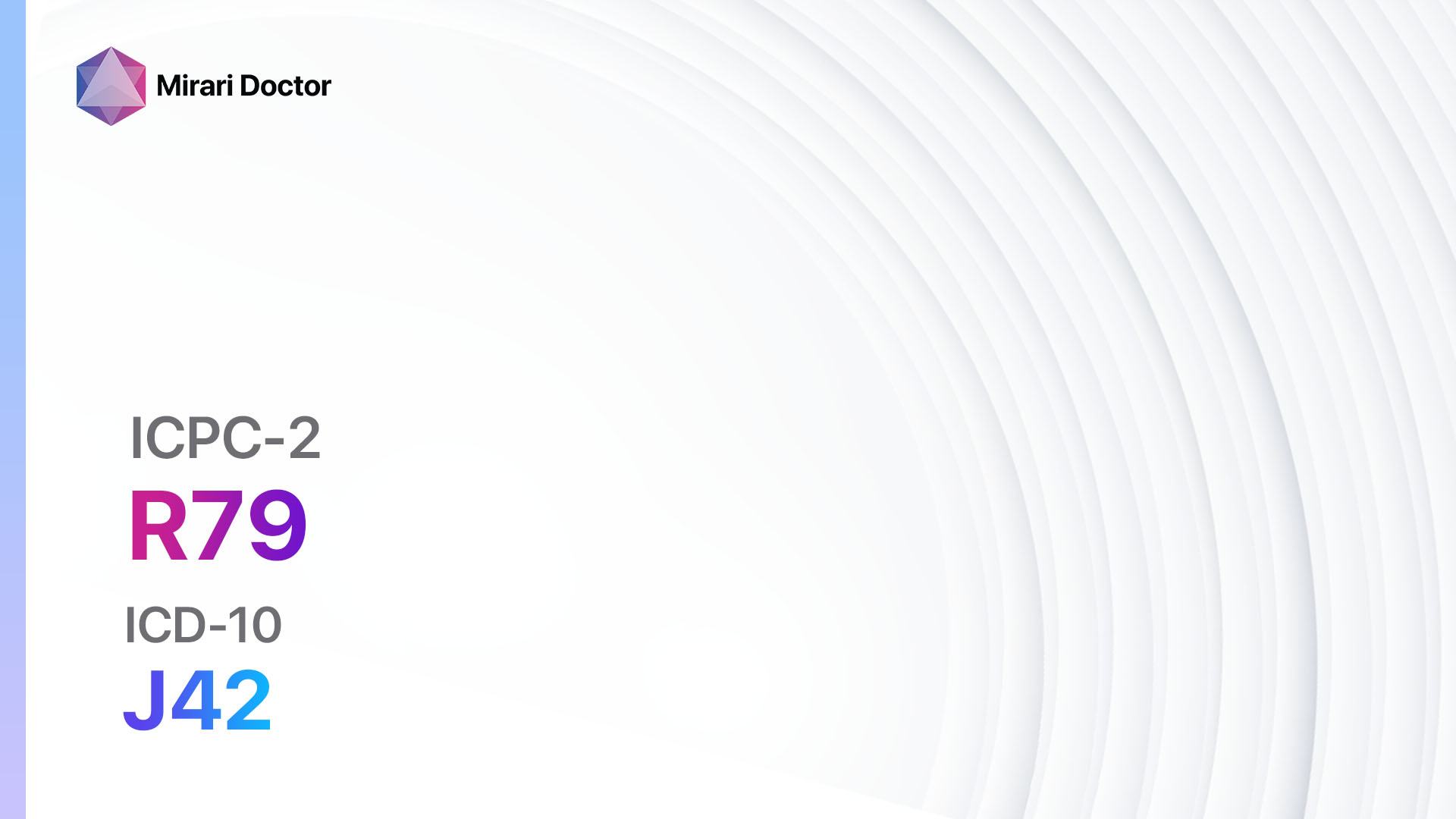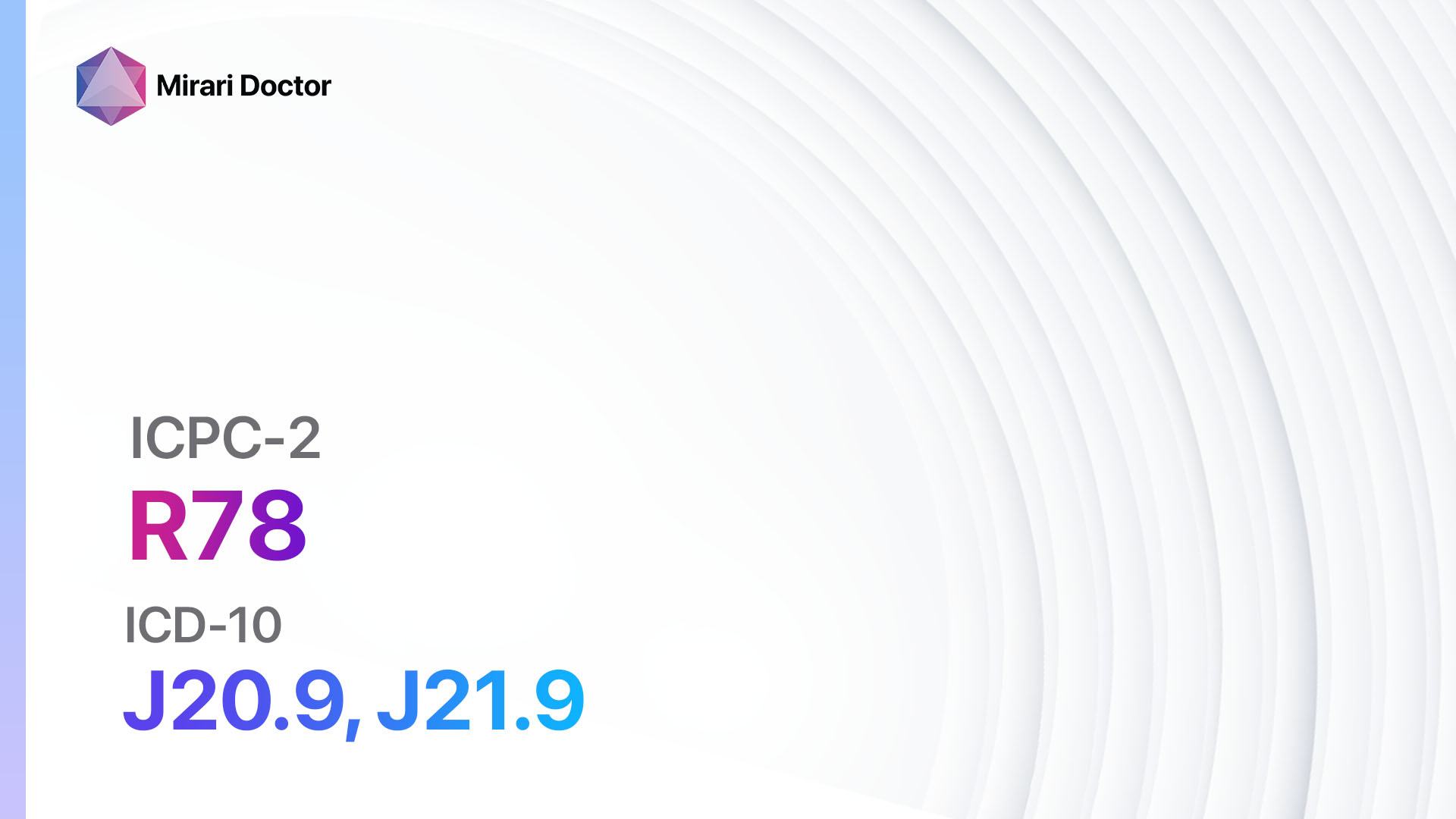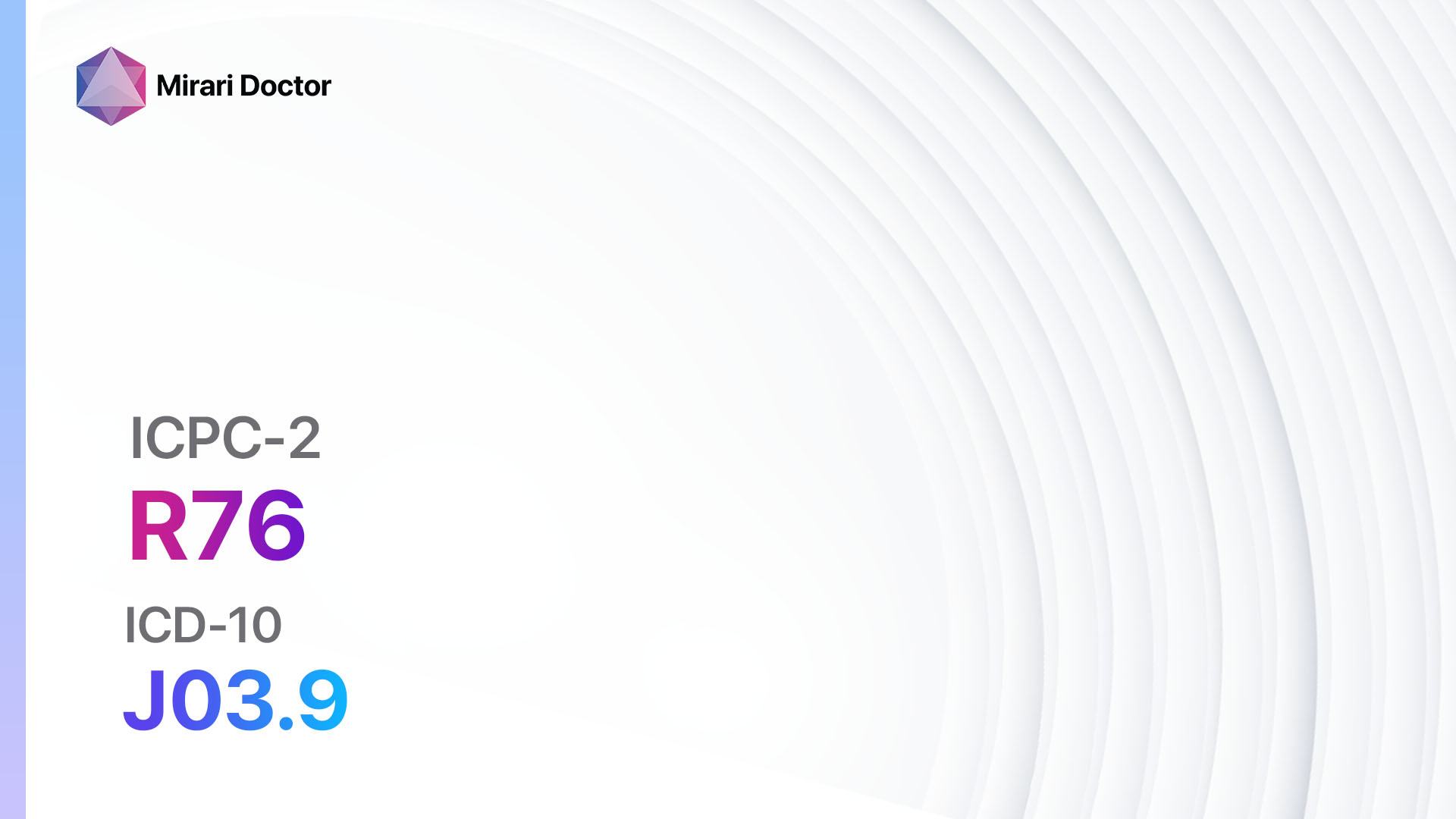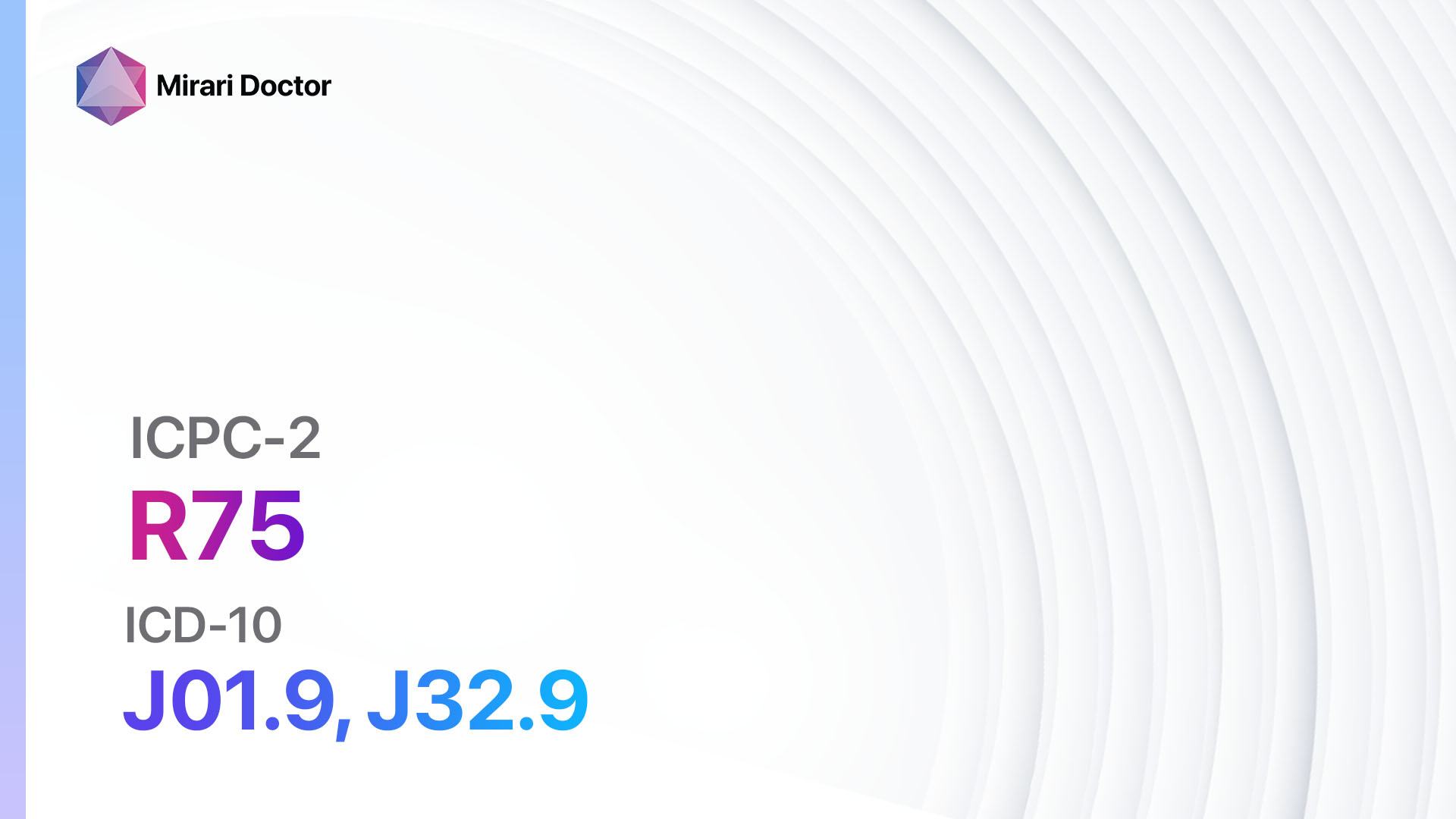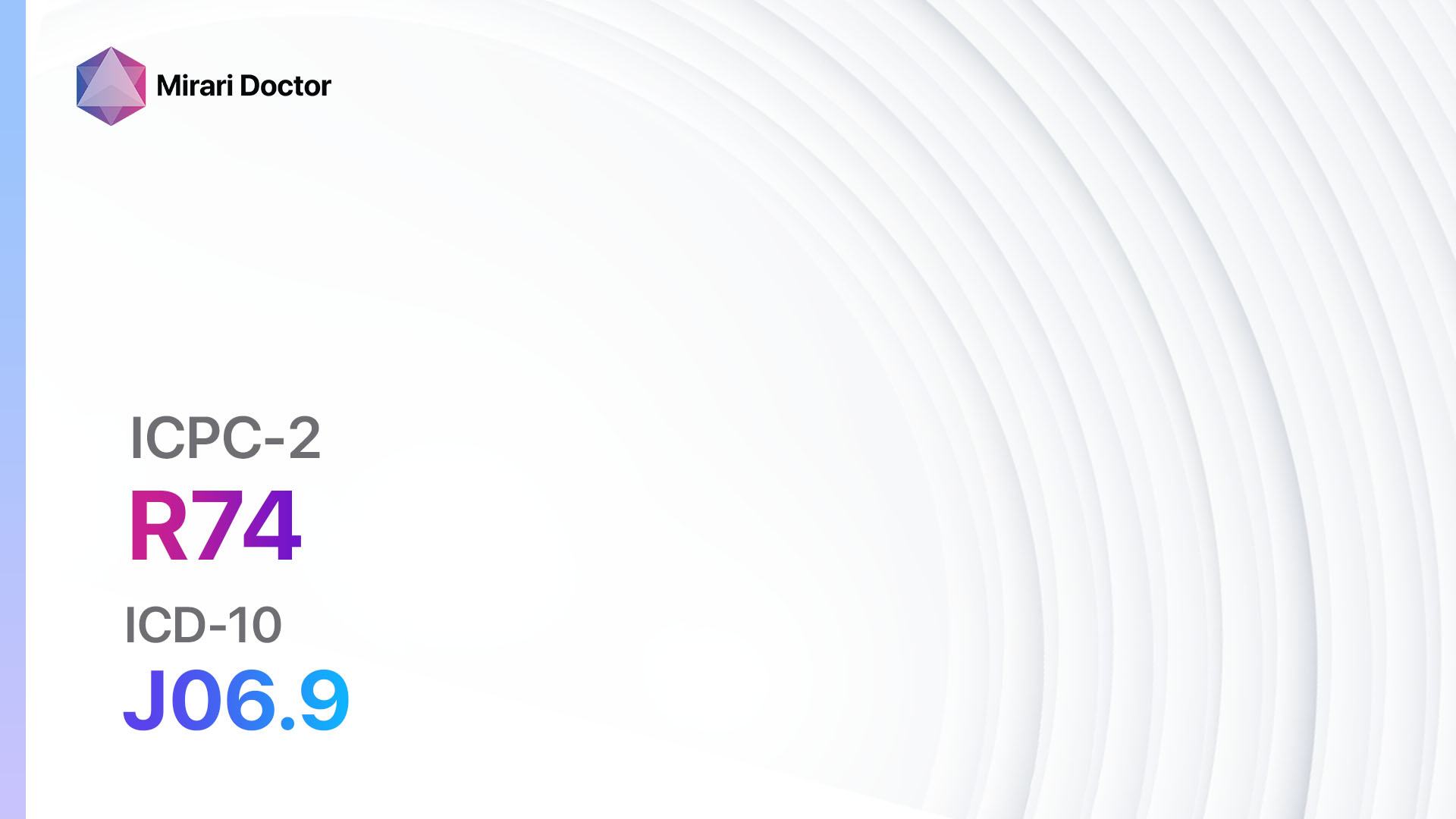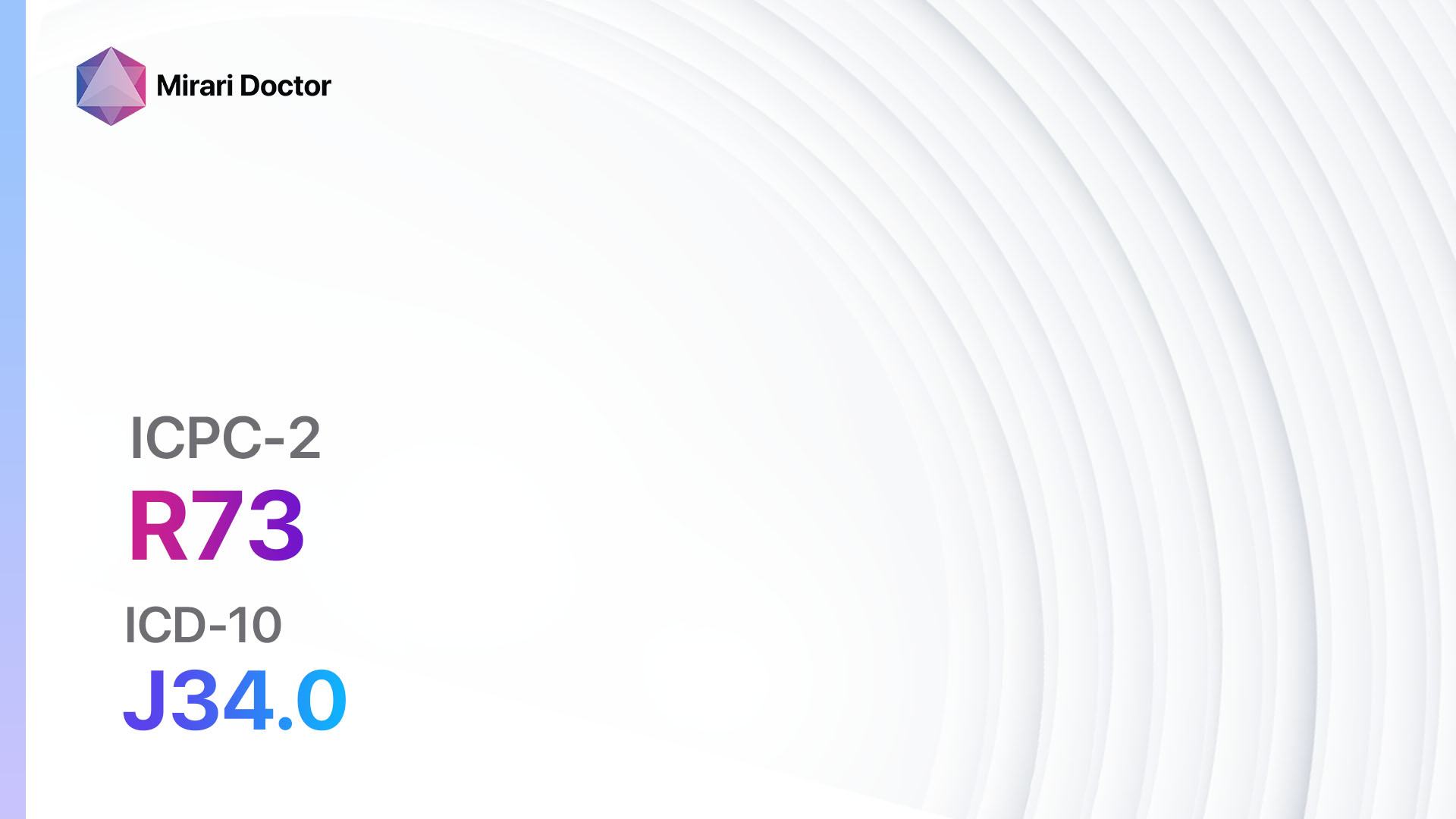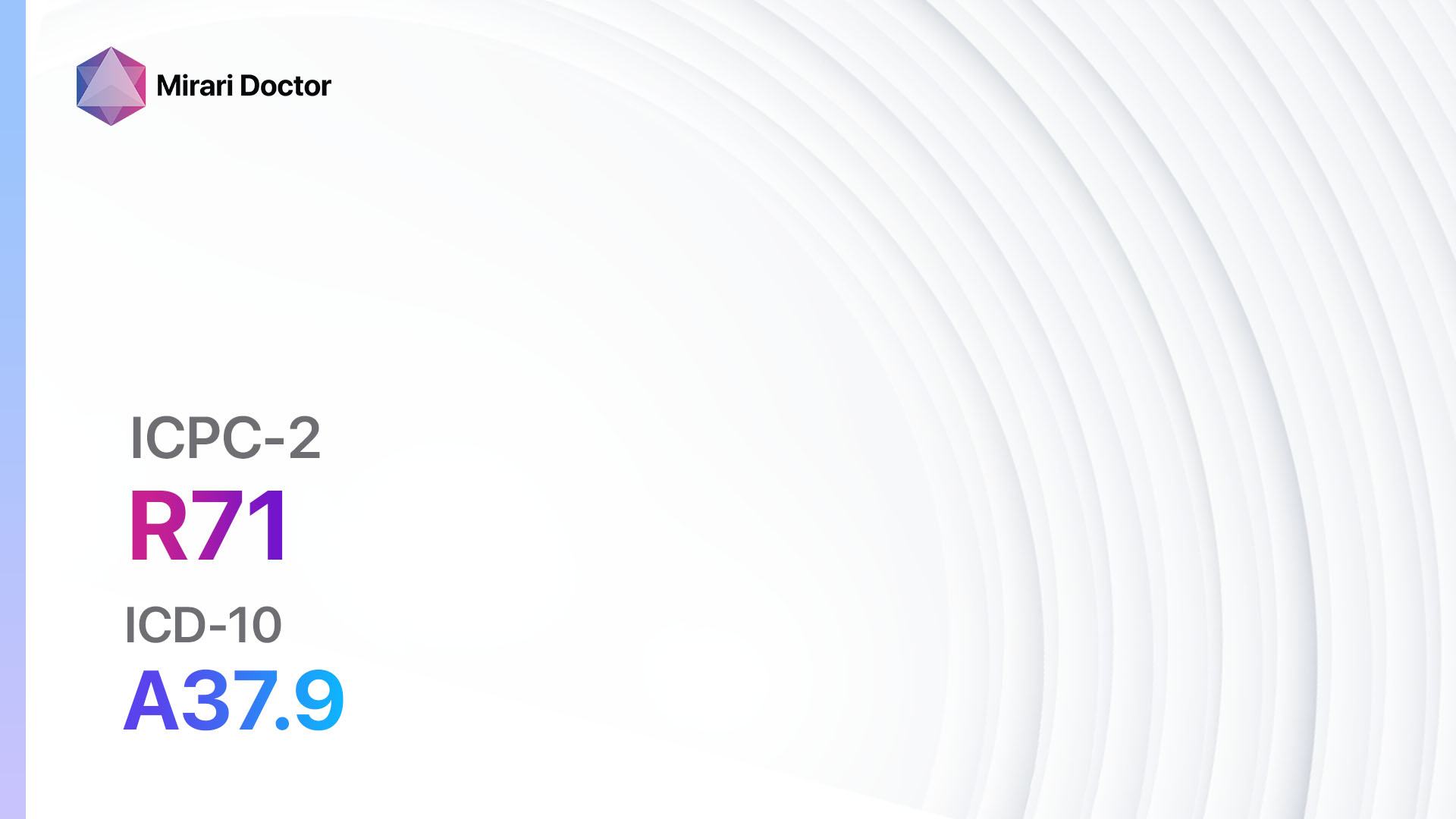
Introduction
Whooping cough, also known as pertussis, is a highly contagious respiratory infection caused by the bacterium Bordetella pertussis. It is characterized by severe coughing fits that can last for several weeks.[1] Whooping cough can be particularly dangerous for infants and young children, and it is important to diagnose and treat the condition promptly to prevent complications. The aim of this guide is to provide healthcare professionals with a comprehensive overview of the diagnostic steps, possible interventions, and patient education strategies for managing whooping cough.
Codes
Symptoms
- Severe coughing fits: These coughing fits often occur in rapid succession and may be accompanied by a “whooping” sound when the person tries to breathe in.[2]
- Runny nose and sneezing: These symptoms are similar to those of the common cold and may precede the onset of severe coughing fits.[3]
- Mild fever: Some individuals with whooping cough may experience a low-grade fever.
- Fatigue: The severe coughing fits can be exhausting and may lead to fatigue. Vomiting: The forceful coughing can sometimes cause vomiting, especially in infants and young children.[4]
Causes
- Bordetella pertussis infection: Whooping cough is caused by the bacterium Bordetella pertussis, which is highly contagious and spreads through respiratory droplets.[5]
- Lack of immunity: Individuals who have not been vaccinated against whooping cough or have not received a booster shot are more susceptible to the infection.
- Decreased vaccine effectiveness: The effectiveness of the whooping cough vaccine can decrease over time, making vaccinated individuals more susceptible to the infection.[6]
Diagnostic Steps
Medical History
- Gather information about the patient’s symptoms, including the presence of severe coughing fits, runny nose, sneezing, fever, fatigue, and vomiting.
- Ask about the duration and frequency of the coughing fits.
- Inquire about any recent exposure to individuals with respiratory infections.
- Determine the patient’s vaccination history and whether they have received a booster shot for whooping cough.[7]
Physical Examination
- Observe the patient for signs of severe coughing fits, such as the characteristic “whooping” sound when trying to breathe in.
- Listen to the patient’s lungs for any abnormal sounds, such as wheezing or crackles.
- Check for signs of dehydration, especially in infants and young children.
- Assess the patient’s overall respiratory status, including their breathing rate and effort.[8]
Laboratory Tests
- Nasopharyngeal swab: Collect a sample from the back of the patient’s nose and throat to test for the presence of Bordetella pertussis bacteria.
- Polymerase chain reaction (PCR) test: This test can detect the genetic material of the bacteria and is highly sensitive and specific for diagnosing whooping cough.[9]
- Blood tests: These tests may be performed to assess the patient’s white blood cell count and to check for signs of infection.
Diagnostic Imaging
- Chest X-ray: This imaging modality may be used to rule out other respiratory conditions, such as pneumonia, that can present with similar symptoms to whooping cough.
- CT scan: In rare cases, a CT scan may be performed to evaluate the extent of lung involvement and to assess for complications, such as lung abscesses.[10]
Other Tests
- Spirometry: This lung function test may be performed to assess the patient’s respiratory function and to rule out other respiratory conditions.
- Pulse oximetry: This non-invasive test measures the oxygen saturation levels in the patient’s blood and can help assess the severity of respiratory distress.
Follow-up and Patient Education
- Schedule follow-up appointments to monitor the patient’s progress and to ensure appropriate treatment.
- Educate the patient and their caregivers about the importance of completing the full course of antibiotics, if prescribed.
- Provide information on infection control measures, such as covering the mouth and nose when coughing or sneezing and practicing good hand hygiene.
- Advise the patient to avoid close contact with infants, young children, and individuals with weakened immune systems until they are no longer contagious.
Possible Interventions
Traditional Interventions
Medications:
Top 5 drugs for Whooping cough:
- Azithromycin:
- Cost: $10-$50 for a course of treatment.
- Contraindications: Hypersensitivity to macrolide antibiotics.
- Side effects: Nausea, diarrhea, abdominal pain.
- Severe side effects: Prolonged QT interval, liver dysfunction.
- Drug interactions: Warfarin, digoxin, cyclosporine.
- Warning: Use with caution in patients with liver or kidney disease.
- Clarithromycin:
- Cost: $10-$50 for a course of treatment.
- Contraindications: Hypersensitivity to macrolide antibiotics.
- Side effects: Nausea, diarrhea, abdominal pain.
- Severe side effects: Prolonged QT interval, liver dysfunction.
- Drug interactions: Warfarin, digoxin, cyclosporine.
- Warning: Use with caution in patients with liver or kidney disease.
- Erythromycin:
- Cost: $10-$50 for a course of treatment.
- Contraindications: Hypersensitivity to macrolide antibiotics.
- Side effects: Nausea, diarrhea, abdominal pain.
- Severe side effects: Prolonged QT interval, liver dysfunction.
- Drug interactions: Warfarin, digoxin, cyclosporine.
- Warning: Use with caution in patients with liver or kidney disease.
- Trimethoprim-sulfamethoxazole:
- Cost: $10-$30 for a course of treatment.
- Contraindications: Hypersensitivity to sulfonamide antibiotics, pregnancy.
- Side effects: Nausea, vomiting, rash.
- Severe side effects: Stevens-Johnson syndrome, toxic epidermal necrolysis.
- Drug interactions: Warfarin, phenytoin, methotrexate.
- Warning: Use with caution in patients with renal impairment.
- Doxycycline (for patients aged 8 years and older):
- Cost: $10-$30 for a course of treatment.
- Contraindications: Hypersensitivity to tetracycline antibiotics, pregnancy.
- Side effects: Nausea, vomiting, photosensitivity.
- Severe side effects: Intracranial hypertension, liver dysfunction.
- Drug interactions: Warfarin, antacids, oral contraceptives.
- Warning: Use with caution in patients with liver or kidney disease.
Alternative Drugs:
- Supportive care: Symptomatic treatment with over-the-counter cough suppressants, such as dextromethorphan, can help alleviate coughing fits.
- Hospitalization: In severe cases, hospitalization may be necessary to provide respiratory support and close monitoring.
Surgical Procedures:
- No surgical procedures are typically indicated for the treatment of whooping cough.
Alternative Interventions
- Herbal remedies: Some herbal remedies, such as thyme and licorice root, may have expectorant and antimicrobial properties that can help alleviate symptoms. Cost: Varies depending on the specific remedy.
- Probiotics: Probiotic supplements may help support the immune system and reduce the severity and duration of symptoms. Cost: $10-$30 per month.
- Vitamin C: High-dose vitamin C supplementation may help boost the immune system and reduce the severity of symptoms. Cost: $10-$20 per month.
- Homeopathic remedies: Some homeopathic remedies, such as Drosera and Pertussin, may be used to alleviate symptoms. Cost: Varies depending on the specific remedy.
- Acupuncture: Acupuncture may help reduce coughing fits and improve overall respiratory function. Cost: $60-$120 per session.
Lifestyle Interventions
- Rest and hydration: Getting plenty of rest and staying hydrated can help support the immune system and alleviate symptoms. Cost: Minimal.
- Humidifier: Using a humidifier in the bedroom can help soothe the airways and reduce coughing fits. Cost: $20-$50.
- Steam inhalation: Inhaling steam from a bowl of hot water or using a steam inhaler can help loosen mucus and alleviate coughing fits. Cost: Minimal.
- Avoiding irritants: Avoiding exposure to smoke, strong odors, and other respiratory irritants can help reduce coughing fits. Cost: Minimal.
- Healthy diet: Eating a balanced diet rich in fruits, vegetables, and immune-boosting nutrients can help support the immune system. Cost: Varies depending on food choices.
It is important to note that the cost ranges provided are approximate and may vary depending on the location and availability of the interventions. It is recommended to consult with a healthcare professional for personalized treatment recommendations and cost estimates.
Mirari Cold Plasma Alternative Intervention
Understanding Mirari Cold Plasma
- Safe and Non-Invasive Treatment: Mirari Cold Plasma is a safe and non-invasive treatment option for various skin conditions. It does not require incisions, minimizing the risk of scarring, bleeding, or tissue damage.
- Efficient Extraction of Foreign Bodies: Mirari Cold Plasma facilitates the removal of foreign bodies from the skin by degrading and dissociating organic matter, allowing easier access and extraction.
- Pain Reduction and Comfort: Mirari Cold Plasma has a local analgesic effect, providing pain relief during the treatment, making it more comfortable for the patient.
- Reduced Risk of Infection: Mirari Cold Plasma has antimicrobial properties, effectively killing bacteria and reducing the risk of infection.
- Accelerated Healing and Minimal Scarring: Mirari Cold Plasma stimulates wound healing and tissue regeneration, reducing healing time and minimizing the formation of scars.
Mirari Cold Plasma Prescription
Video instructions for using Mirari Cold Plasma Device – R71 Whooping cough (ICD-10:A37.9)
| Mild | Moderate | Severe |
| Mode setting: 1 (Infection) Location: Localized Morning: 15 minutes, Evening: 15 minutes |
Mode setting: 1 (Infection) Location: Localized Morning: 30 minutes, Lunch: 30 minutes, Evening: 30 minutes |
Mode setting: 1 (Infection) Location: Localized Morning: 30 minutes, Lunch: 30 minutes, Evening: 30 minutes |
| Mode setting: 2 (Wound) Location: 4 (Heart, Bile & Pancreas) Morning: 15 minutes, Evening: 15 minutes |
Mode setting: 2 (Wound) Location: 4 (Heart, Bile & Pancreas) Morning: 30 minutes, Lunch: 30 minutes, Evening: 30 minutes |
Mode setting: 2 (Wound) Location: 4 (Heart, Bile & Pancreas) Morning: 30 minutes, Lunch: 30 minutes, Evening: 30 minutes |
| Mode setting: 7 (Immunotherapy) Location: 4 (Heart, Bile & Pancreas) Morning: 15 minutes, Evening: 15 minutes |
Mode setting: 7 (Immunotherapy) Location: 4 (Heart, Bile & Pancreas) Morning: 30 minutes, Lunch: 30 minutes, Evening: 30 minutes |
Mode setting: 7 (Immunotherapy) Location: 4 (Heart, Bile & Pancreas) Morning: 30 minutes, Lunch: 30 minutes, Evening: 30 minutes |
| Total Morning: 45 minutes approx. $7.50 USD, Evening: 45 minutes approx. $7.50 USD |
Total Morning: 90 minutes approx. $15 USD, Lunch: 90 minutes approx. $15 USD, Evening: 90 minutes approx. $15 USD |
Total Morning: 90 minutes approx. $15 USD, Lunch: 90 minutes approx. $15 USD, Evening: 90 minutes approx. $15 USD |
| Usual treatment for 7-60 days approx. $105 USD – $900 USD | Usual treatment for 6-8 weeks approx. $1,890 USD – $2,520 USD |
Usual treatment for 3-6 months approx. $4,050 USD – $8,100 USD
|
 |
|
Use the Mirari Cold Plasma device to treat Whooping cough effectively.
WARNING: MIRARI COLD PLASMA IS DESIGNED FOR THE HUMAN BODY WITHOUT ANY ARTIFICIAL OR THIRD PARTY PRODUCTS. USE OF OTHER PRODUCTS IN COMBINATION WITH MIRARI COLD PLASMA MAY CAUSE UNPREDICTABLE EFFECTS, HARM OR INJURY. PLEASE CONSULT A MEDICAL PROFESSIONAL BEFORE COMBINING ANY OTHER PRODUCTS WITH USE OF MIRARI.
Step 1: Cleanse the Skin
- Start by cleaning the affected area of the skin with a gentle cleanser or mild soap and water. Gently pat the area dry with a clean towel.
Step 2: Prepare the Mirari Cold Plasma device
- Ensure that the Mirari Cold Plasma device is fully charged or has fresh batteries as per the manufacturer’s instructions. Make sure the device is clean and in good working condition.
- Switch on the Mirari device using the power button or by following the specific instructions provided with the device.
- Some Mirari devices may have adjustable settings for intensity or treatment duration. Follow the manufacturer’s instructions to select the appropriate settings based on your needs and the recommended guidelines.
Step 3: Apply the Device
- Place the Mirari device in direct contact with the affected area of the skin. Gently glide or hold the device over the skin surface, ensuring even coverage of the area experiencing.
- Slowly move the Mirari device in a circular motion or follow a specific pattern as indicated in the user manual. This helps ensure thorough treatment coverage.
Step 4: Monitor and Assess:
- Keep track of your progress and evaluate the effectiveness of the Mirari device in managing your Whooping cough. If you have any concerns or notice any adverse reactions, consult with your health care professional.
Note
This guide is for informational purposes only and should not replace the advice of a medical professional. Always consult with your healthcare provider or a qualified medical professional for personal advice, diagnosis, or treatment. Do not solely rely on the information presented here for decisions about your health. Use of this information is at your own risk. The authors of this guide, nor any associated entities or platforms, are not responsible for any potential adverse effects or outcomes based on the content.
Mirari Cold Plasma System Disclaimer
- Purpose: The Mirari Cold Plasma System is a Class 2 medical device designed for use by trained healthcare professionals. It is registered for use in Thailand and Vietnam. It is not intended for use outside of these locations.
- Informational Use: The content and information provided with the device are for educational and informational purposes only. They are not a substitute for professional medical advice or care.
- Variable Outcomes: While the device is approved for specific uses, individual outcomes can differ. We do not assert or guarantee specific medical outcomes.
- Consultation: Prior to utilizing the device or making decisions based on its content, it is essential to consult with a Certified Mirari Tele-Therapist and your medical healthcare provider regarding specific protocols.
- Liability: By using this device, users are acknowledging and accepting all potential risks. Neither the manufacturer nor the distributor will be held accountable for any adverse reactions, injuries, or damages stemming from its use.
- Geographical Availability: This device has received approval for designated purposes by the Thai and Vietnam FDA. As of now, outside of Thailand and Vietnam, the Mirari Cold Plasma System is not available for purchase or use.
References
- Centers for Disease Control and Prevention. (2022). Pertussis (Whooping Cough). Retrieved from https://www.cdc.gov/pertussis/index.html
- Mayo Clinic. (2021). Whooping cough. Retrieved from https://www.mayoclinic.org/diseases-conditions/whooping-cough/symptoms-causes/syc-20378973
- National Health Service. (2021). Whooping cough. Retrieved from https://www.nhs.uk/conditions/whooping-cough/
- American Academy of Pediatrics. (2021). Pertussis (Whooping Cough). Retrieved from https://www.healthychildren.org/English/health-issues/conditions/chest-lungs/Pages/Whooping-Cough.aspx
- World Health Organization. (2022). Pertussis. Retrieved from https://www.who.int/health-topics/pertussis
- Klein, N. P., et al. (2012). Waning protection after fifth dose of acellular pertussis vaccine in children. New England Journal of Medicine, 367(11), 1012-1019.
- Kilgore, P. E., et al. (2016). Pertussis: Microbiology, Disease, Treatment, and Prevention. Clinical Microbiology Reviews, 29(3), 449-486.
- Cornia, P. B., et al. (2010). Does This Coughing Adolescent or Adult Patient Have Pertussis? JAMA, 304(8), 890-896.
- Tatti, K. M., et al. (2011). Development and evaluation of dual-target real-time polymerase chain reaction assays to detect Bordetella spp. Diagnostic Microbiology and Infectious Disease, 69(1), 21-28.
- Paddock, C. D., et al. (2008). Pathology and pathogenesis of fatal Bordetella pertussis infection in infants. Clinical Infectious Diseases, 47(3), 328-338.
Related articles
Made in USA


